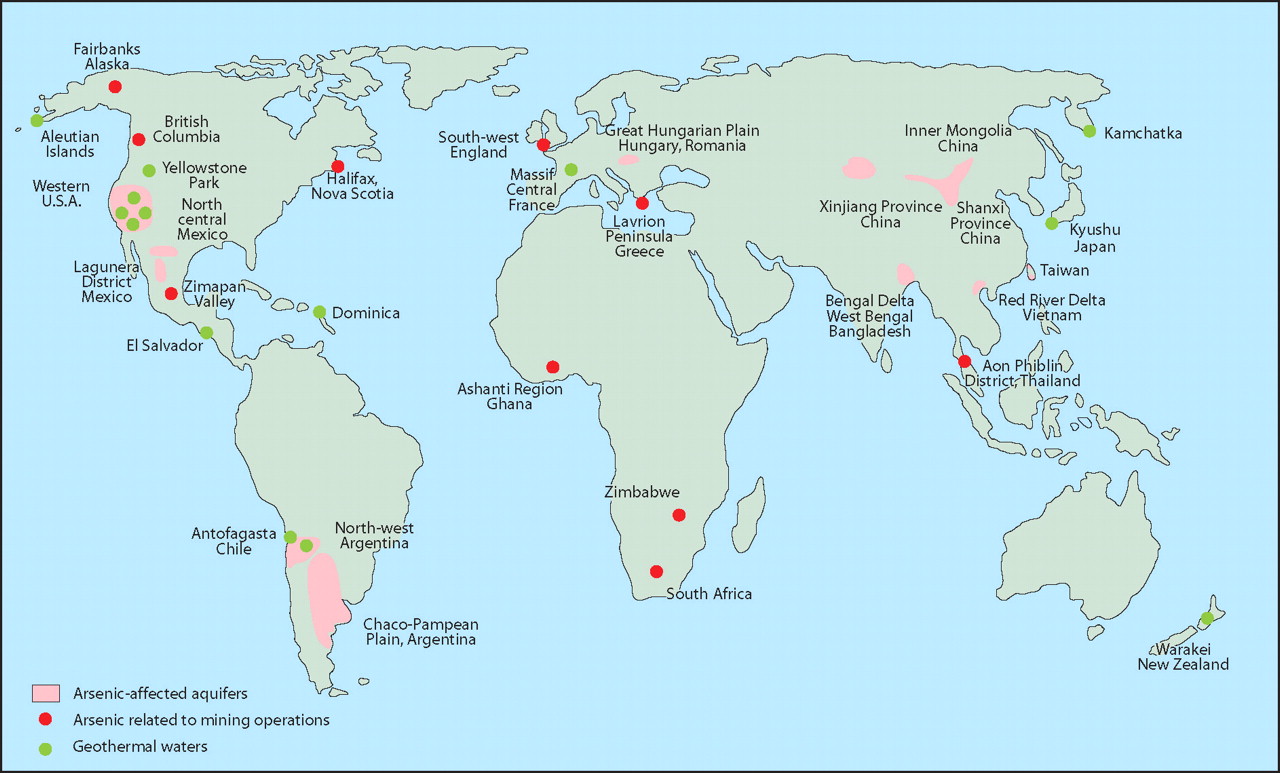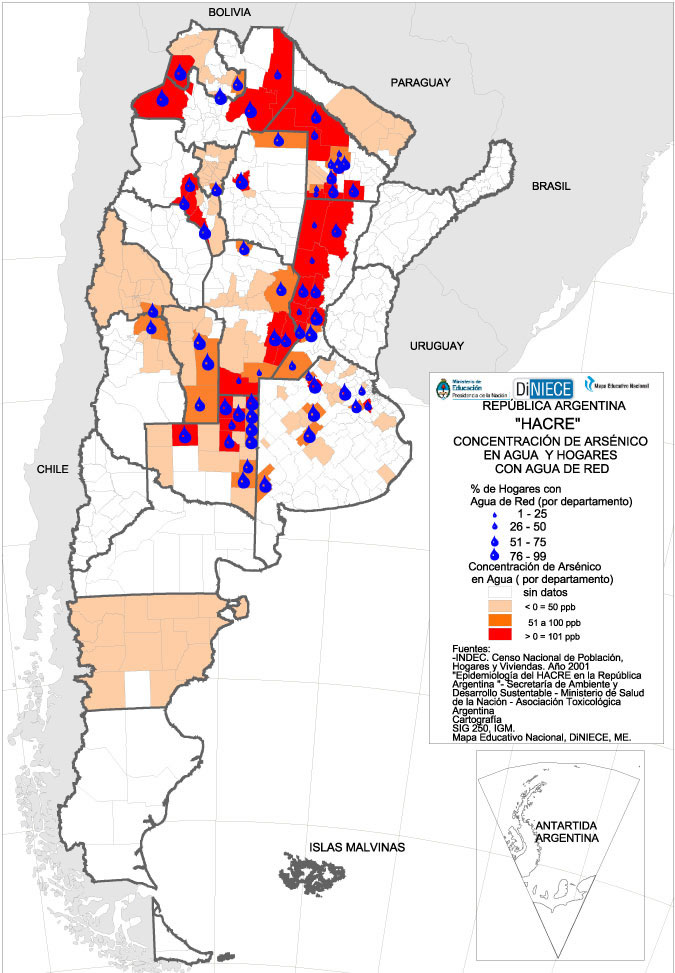Team:Buenos Aires/ motivation
From 2013.igem.org
(→Motivation) |
(→Motivation) |
||
| (7 intermediate revisions not shown) | |||
| Line 3: | Line 3: | ||
=Motivation= | =Motivation= | ||
| - | Contamination is a | + | '''Contamination''' is a major and continuously growing worldwide problem. As '''only 2.5% of the water is available for human consumption and just 1% of it supplies ecosystems and human populations''', contamination in natural springs is a key issue to be addressed. |
| - | Health problems in developing countries many times derive from unsuitable water supply or incorrect treatment, and waterborne diseases are still a concern and a substantial cause of death in these regions. | + | Health problems in developing countries many times derive from unsuitable water supply or incorrect treatment, and '''waterborne diseases''' are still a concern and a substantial cause of death in these regions. |
| - | Limited access to pure water is a problem that tends to worsen. Making water suitable for human consumption could be easy and inexpensive, although this depends on the type of contamination, complexity and abundance. Even if this was not possible, information on pollutant levels could be used to modify consumption patterns and seek alternative sources. | + | Limited access to pure water is a problem that tends to worsen. Making water suitable for human consumption could be easy and inexpensive, although this depends on the type of contamination, complexity and abundance. Even if this was not possible, '''information on pollutant levels''' could be used to modify consumption patterns and seek '''alternative water sources'''. |
| + | |||
| + | [[File: Mapa_mundial_arsenico.jpg|300px|thumb|right|Global arsenic distribution]] | ||
At present, the spatial and temporal quantification of contaminants is limited by the difficulty in | At present, the spatial and temporal quantification of contaminants is limited by the difficulty in | ||
| - | processing samples, remoteness of some of the locations and its associated costs. Moreover, the lack of centralization and systematization of data makes it very difficult to obtain information. Our central goal is to | + | processing samples, remoteness of some of the locations and its associated costs. Moreover, the lack of centralization and systematization of data makes it very difficult to obtain information. Our central goal is helping to solve this situation, so we thought of a '''biosensor that was cheap and easy to use by people without previous training or equipment'''. |
| - | There are many types of contamination and corresponding decontamination processes. The pollutants that render water unsuitable for human consumption can vary from just a single toxic substance to a highly complex mixture of these and harmful microorganisms. Heavy metals, arsenic and nitrites derived from agricultural runoff are world-spread examples of groundwater contamination. Because of that, we decided to make arsenic biosensor as a | + | There are many types of contamination and corresponding decontamination processes. The pollutants that render water unsuitable for human consumption can vary from just a single toxic substance to a highly complex mixture of these and harmful microorganisms. Heavy metals, arsenic and nitrites derived from agricultural runoff are world-spread examples of groundwater contamination. Because of that, '''we decided to make arsenic biosensor as a first approach. However, we have made the design modular so as to make the detected pollutant easily changed'''. |
| + | |||
| + | |||
| + | [[File: Mapa_arsenico_argentina.jpg|300px|thumb|left|Arsenic contamination distribution in Argentina]] | ||
| + | |||
| - | + | '''Arsenic is naturally present in soil and correspondingly in ground water in vast regions round the world'''. Argentina, the United States, Bangladesh and Chile are on the top of the list of countries with high natural arsenic concentration in certain zones ground water. '''Population without access to treated water living in these areas is exposed to Arsenic consumption'''. This derives in certain '''health problems''' such as skin lesions, skin, lung and bladder cancer, and gastro-intestinal and pulmonary disorders. | |
| - | Because of the spatial variability of arsenic in groundwater aquifers, there are often arsenic-free sources in zones with general high levels of arsenic contamination. For this reason, having an accurate knowledge of the ground water contamination grade could help populations at risk to discern between contaminated and safe water sources. | + | Because of the spatial variability of arsenic in groundwater aquifers, there are often arsenic-free sources in zones with general high levels of arsenic contamination. For this reason, '''having an accurate knowledge of the ground water contamination grade could help populations at risk to discern between contaminated and safe water sources'''. |
| - | |||
| - | |||
Latest revision as of 01:31, 28 October 2013
Motivation
Contamination is a major and continuously growing worldwide problem. As only 2.5% of the water is available for human consumption and just 1% of it supplies ecosystems and human populations, contamination in natural springs is a key issue to be addressed.
Health problems in developing countries many times derive from unsuitable water supply or incorrect treatment, and waterborne diseases are still a concern and a substantial cause of death in these regions. Limited access to pure water is a problem that tends to worsen. Making water suitable for human consumption could be easy and inexpensive, although this depends on the type of contamination, complexity and abundance. Even if this was not possible, information on pollutant levels could be used to modify consumption patterns and seek alternative water sources.
At present, the spatial and temporal quantification of contaminants is limited by the difficulty in processing samples, remoteness of some of the locations and its associated costs. Moreover, the lack of centralization and systematization of data makes it very difficult to obtain information. Our central goal is helping to solve this situation, so we thought of a biosensor that was cheap and easy to use by people without previous training or equipment.
There are many types of contamination and corresponding decontamination processes. The pollutants that render water unsuitable for human consumption can vary from just a single toxic substance to a highly complex mixture of these and harmful microorganisms. Heavy metals, arsenic and nitrites derived from agricultural runoff are world-spread examples of groundwater contamination. Because of that, we decided to make arsenic biosensor as a first approach. However, we have made the design modular so as to make the detected pollutant easily changed.
Arsenic is naturally present in soil and correspondingly in ground water in vast regions round the world. Argentina, the United States, Bangladesh and Chile are on the top of the list of countries with high natural arsenic concentration in certain zones ground water. Population without access to treated water living in these areas is exposed to Arsenic consumption. This derives in certain health problems such as skin lesions, skin, lung and bladder cancer, and gastro-intestinal and pulmonary disorders.
Because of the spatial variability of arsenic in groundwater aquifers, there are often arsenic-free sources in zones with general high levels of arsenic contamination. For this reason, having an accurate knowledge of the ground water contamination grade could help populations at risk to discern between contaminated and safe water sources.
 "
"

